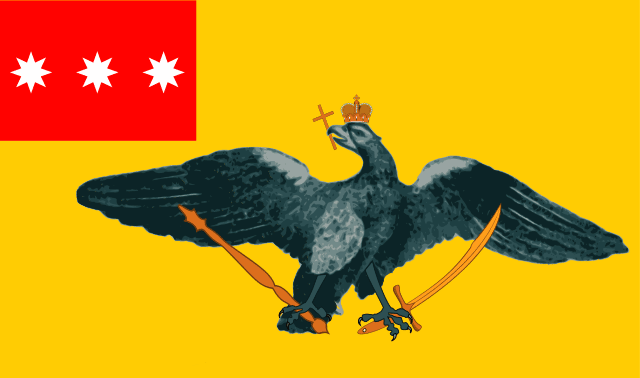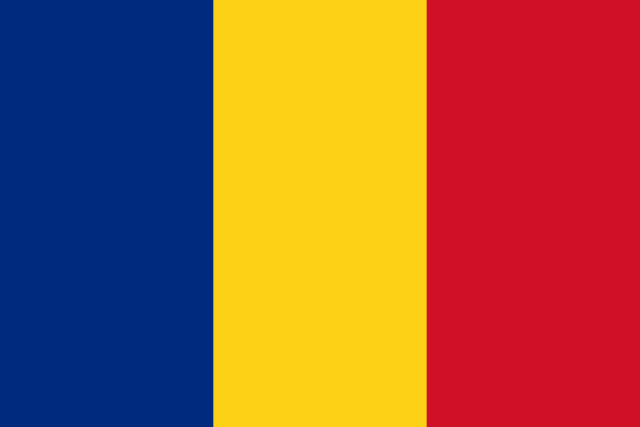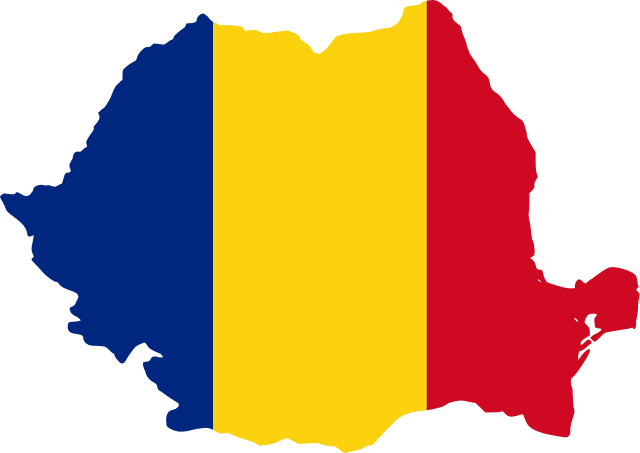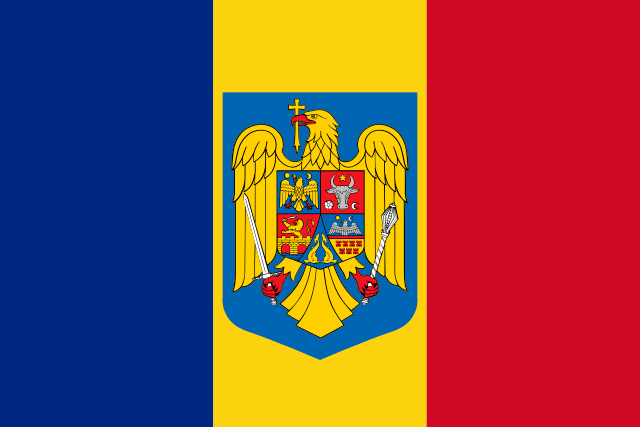Contents
The ancestors of the Romanian flag, like those of many other European nations, were the feudal rulers of the region. Since many of the coats of arms of the lords and kings who governed the regions that would later become a part of Romania include the same colors as the flag, the history of the flag may be traced back hundreds of years.
The Romanian flag is tricolor. According to the country’s constitution, the colors are positioned vertically from the flagpole in the following order: blue, yellow, and red. In the article below, we will explore the Romanian flag, its symbolic meaning, and its history closely.
Brief History Of Romania
Romania is located in Southeastern Europe and is bordered by Moldova, Serbia, Ukraine, Hungary, and the Black Sea. Therefore, the standard time in Romania is Eastern European Time. Let’s start our research regarding the Romanian flag with a brief overview of the most significant historical events in the country.
The Dacians, a Thracian tribe, colonized Romania in approximately 200 BC. The Romans, under Trajan’s rule, subjugated the Dacians in 106 AD. The area was made into a province of Rome. Romania became the first province the Romans abandoned after they left the region some 160 years later. The Goths, Huns, and Bulgars would all conquer the region over the course of the following few hundred years.
The principalities of Moldavia and Wallachia developed from the region throughout the Middle Ages. They were subjugated by the Ottoman Empire in the 1500s until coming back together in 1859 under Alexander Cuza. Under the terms of the Berlin Treaty, the nation attained complete independence in 1878. Carol of Hohenzollern-Sigmaringen reigned as the first king of Romania.
Romania won Transylvania after World War I but switched allegiances and allied with Hitler’s Nazi Germany during World War II. A coup orchestrated by King Mihai resulted in the collapse of the government in 1944. Then, Romania sided with the allies in their fight against Germany.
Romania was one of several nations where the Soviet Union expelled the Nazis during World War II, guaranteeing that Romania emerged as a communist state. Romania was dominated by two communist tyrants from 1947 until 1989, who severely damaged the country’s economy and culture.
Following the war, Romania was occupied by the Soviet Union for a period of time, and Nicolae Ceausescu’s communist regime was installed there. Although its shattered national culture still bears the scars of the communist era, Romania regained its actual independence with the fall of the Soviet Union. The country was able to join the EU in 2007 because the communists were ousted from power in 1996.
First Romanian Flag
The native flags of Moldavia and Wallachia, two principalities that subsequently united to create Romania, were approved for use by the Ottoman authorities in 1834. Their regional flags, which were yellow with an eagle (Walachia) and blue with an ox head (Moldavia), were based on historical heraldic banners. Walachia also picked a naval ensign with red, blue, and yellow horizontal stripes that would subsequently be used for the Romanian flag.
Other than these historical connotations, there is now no official explanation of those colors. It has horizontal stripes, and the words “justice” in Walachian and “brotherhood” in Moldavian are inscribed in the middle. Although this flag was only in use for a short time, it served as the model for the contemporary tricolor.

Romanian Flag During Soviet Regime
The modern Romanian tricolor, blue-yellow-red, was inspired by the 1848 revolutions that swept Europe. When a communist government assumed power in Romania in 1947 and banned the old flag as a representation of the Romanian monarchy. So, that flag was no longer in use.
Not only the flag but all of the former kingdom’s emblems, including its coat of arms and tricolor flags, were abolished when Romania has declared a socialist people’s republic on December 30, 1947. Under the communist era, the Romanian flag had the country’s insignia in the center of the yellow stripe. In addition to that, for the first time, the 2:3 ratio was mandated by legislation. By 1989, the coat of arms had undergone four changes.
Contrary to most communist regimes, which adopted a red flag as their emblem, the new administration substituted a flag with horizontal stripes and the country’s logo. People who opposed the communist regime during its final years are known for cutting the flag’s emblem out of the middle, resulting in the contemporary version that won official recognition when the regime fell.
Current Romanian Flag
The communist symbol was eliminated from the flag when the communists were overthrown. It practically pulled off many existing flags, leaving a hole in the center. The constitution, as amended in late December 1989, established the Romanian tricolor as three vertical stripes of blue, yellow, and red. Although it was restored in 1992, the original (eagle) coat of arms has not yet been formally included in the flag.
The coat of arms was viewed as a representation of Nicolae Ceausescu’s rule. The phrase “the flag with the hole” applied to these flags. Even now, after particular public demonstrations, particularly those against corrupt government officials, these flags are periodically flown.
The 26th of June is National Romanian Flag Day. It has been celebrated since 1998 when Law Number 96 was established. During the holiday, educational and cultural programs are planned and organized. The historical characters are actively seen in the programs to teach newer generations what the country went through.

Romanian Flag Symbolism
Blue, yellow, and red horizontal tricolors are the current standard for the Romanian flag. The connection between those hues and Romania precedes their original symbolic connotations, which were granted in 1821.
The yellow band was meant to symbolize justice, the red band was associated with brotherhood, and the blue band was said to stand for liberty. Some sources claim that the flag also symbolizes the union of the flags of Moldavia and Wallachia. However, it is more likely a myth that developed years after the flag’s creation than a deliberate intention on the part of the designer.
Cobalt blue, chrome yellow, and vermilion red were designated as the official colors under the Romanian Flag Protocol.

Romanian Flag Protocol
The Romanian flag’s protocol is set down in Law Number 75, which was introduced in 1994. In 2001, the government adopted regulations to control the display of the Romanian flag, the singing of the national hymn, and the wearing of symbols bearing the country’s coat of arms. Military standards and protocols are governed by internal regulation.
On buildings and in the offices of governmental authorities and institutions, as well as those of political parties, labor unions, educational and cultural institutions, border crossings, and international airports, the Romanian flag must always be flown. It is always flown as an ensign on all ships and other vessels that sail under the Romanian flag.
The Romanian flag is flown at the headquarters of the country’s diplomatic missions and consular offices, as well as at the homes of the heads of these entities, in accordance with established etiquette. Similar to other customs, leaders of Romanian diplomatic missions and consular offices are transported in cars flying the Romanian flag as a standard while on official business.
There are no limitations on how a person or legal entity can have the Romanian flag displayed at their place of residence. Only the government has the authority to designate days for national mourning, during which the Romanian flag is flown at half-height.
Interesting Facts about the Romanian Flag
- The 26th of June has been declared Romania’s National Flag Day.
- The Romanian Constitution specifies the characteristics of the flag as well as its specific colors.
- The only difference between the Romanian flag and the Chad flag is the shade of blue. Chad requested an investigation from the UN in 2004, but nothing has changed since then.
- The flag of Romania resembles that of Andorra.
- Any person will be fined for disrespecting the Romanian flag.
National Coat Of Arms
On September 10, 1992, Romania adopted its national coat of arms. The central representation of Romania’s coat of arms is a golden eagle holding a shield in front of it, a mace and a sword in its talons, and a cross in its beak. The shield is divided into five portions, each containing a traditional emblem from one of Romania’s five historical provinces.
Wallachia is represented by the eagle in the upper left corner, Moldavia by the bull in the upper right, Dobrogea by the dolphins in the lower center, Oltenia and Banat by the lion and bridge in the bottom left, and Transylvania by the black eagle. In the lower right corner, the seven castles, a sun, and a moon are shown.

Bottom Line
To sum up, the current Romanian flag was designed in 1989 and has a simple tricolor design, like the flags of many other countries.
Nevertheless, despite the flag’s simple shape, its colors have considerable symbolic meaning. It was decided at this time that the hues employed in what would later become the Romanian flag stood for liberty, justice, and brotherhood.